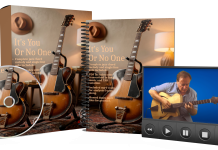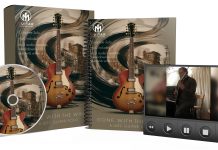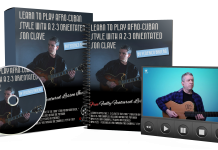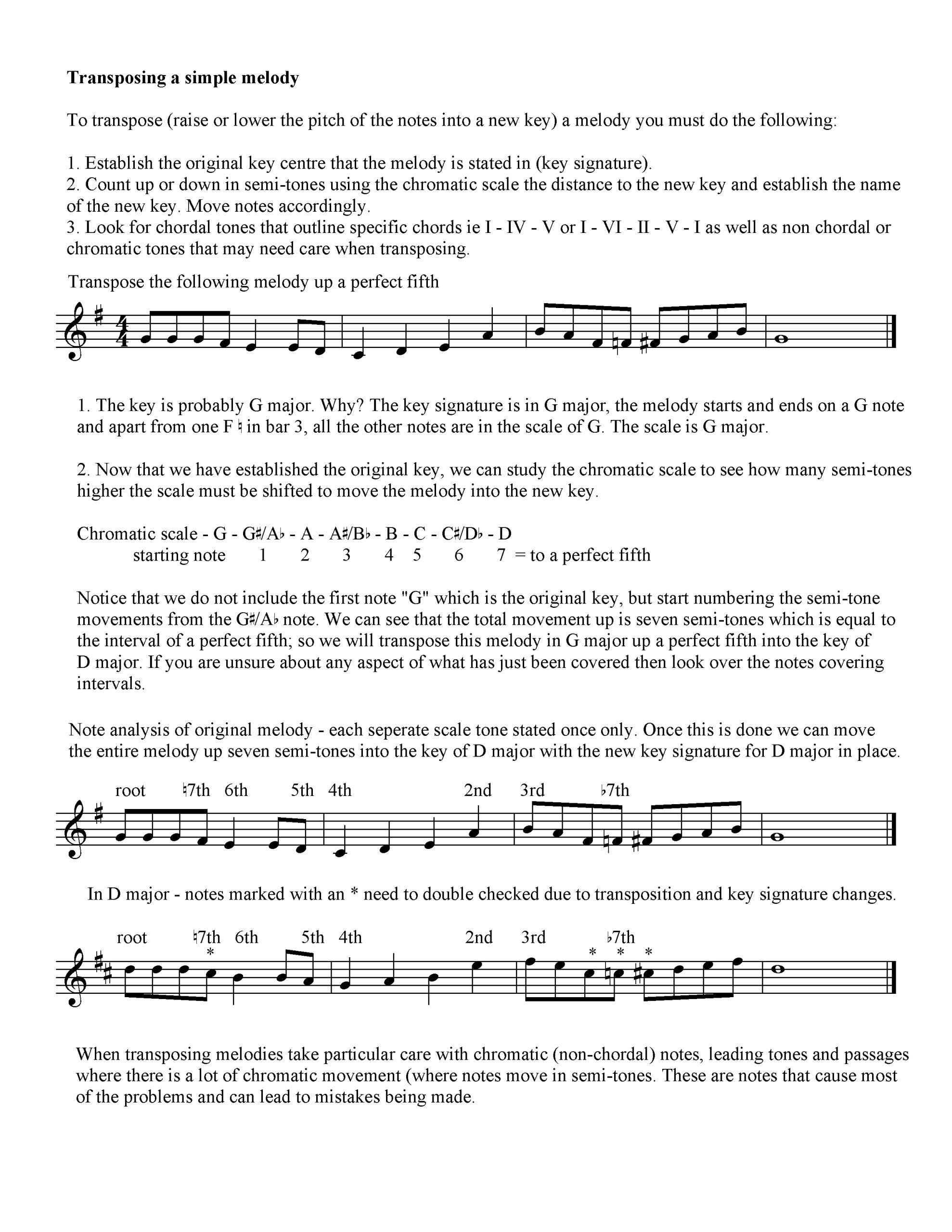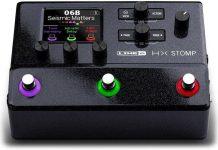This post may contain affiliate links. As an Amazon associate, Google associate as well as associate for other programs, Guitar & Music Institute may earn commissions from qualifying purchases.

In the realm of guitar playing, mastering the skill of music transposition is an important skill for expanding your musical knowledge and expression. This article, “Guitar Music Transposition Essentials” offers an insight into how you can move music into different keys, which helps in countless band and playing scenarios.
This insightful guide equips you with the necessary knowledge and techniques to fluently transpose your music, enabling a broader, more versatile repertoire and a deeper connection with your instrument. Whether you are aiming to accompany singers in various keys, engage with compositions outside your comfortable range, or simply wish to enrich your understanding of guitar music theory, this article serves as an invaluable resource on your musical journey.
Understanding Music Transposition
Definition of Music Transposition
Music transposition involves changing the pitch of a piece of music while retaining its structural integrity. This means you shift every note by the same amount, either up or down, to a different key or pitch level. The purpose of this shift is to adapt music to better suit vocal ranges, different instruments, or simply for personal preference.
The Importance of Transposing Music
Transposing music plays a crucial role in ensuring a piece is accessible and performable for different musicians and instruments. It allows you to adjust a piece written for one instrument so it can be played on another, or to accommodate a vocalist’s range. This adaptability enhances musical collaboration and broadens the range of repertoire accessible to performers.
Overview of How Transposition Works on the Guitar
On the guitar, transposition involves shifting chords, scales, or melodies up or down the fretboard. This can be achieved manually, through the use of a capo, or with the help of music software. Understanding the relationships between notes and chords on the fretboard is vital for effective transposition on the guitar.
The Basics of Guitar Music Theory
Understanding the Guitar Fretboard
To effectively transpose music for guitar, you must first understand the fretboard. Each fret represents a half-step increase from the open string, and understanding this layout allows you to identify note names and locations across the fretboard. Familiarity with the fretboard is essential for transposing music accurately.
Notes and Chords
Notes are the building blocks of music, and on the guitar, you produce them by pressing strings at different frets. Chords are formed by playing multiple notes simultaneously. Both individual notes and chords can be transposed to different keys to achieve the desired musical effect.
Key Signatures and Scales
Key signatures indicate the key of a piece of music, determining which notes and chords are used. Scales are sequences of notes that follow a set pattern within a key. Understanding both is critical for transposing music, as you’ll need to shift from one key to another while maintaining the piece’s musical integrity.
Why Transpose Music for Guitar
Accommodating Vocal Ranges
Transposing music allows guitarists to adjust songs to suit vocal ranges. This is particularly helpful when accompanying singers, ensuring the music complements rather than clashes with their vocal range.
Playing Along with Other Instruments
In ensemble settings, it’s often necessary to transpose music so that all instruments are in harmony. This requires a thorough understanding of how guitar music relates to that of other instruments in terms of pitch and timbre.
Facilitating Easier Fingerings and Timbres
Transposition can simplify complex fingerings, making pieces more accessible. Additionally, transposing can exploit the guitar’s tonal characteristics by shifting music into registers that highlight the instrument’s rich timbres.
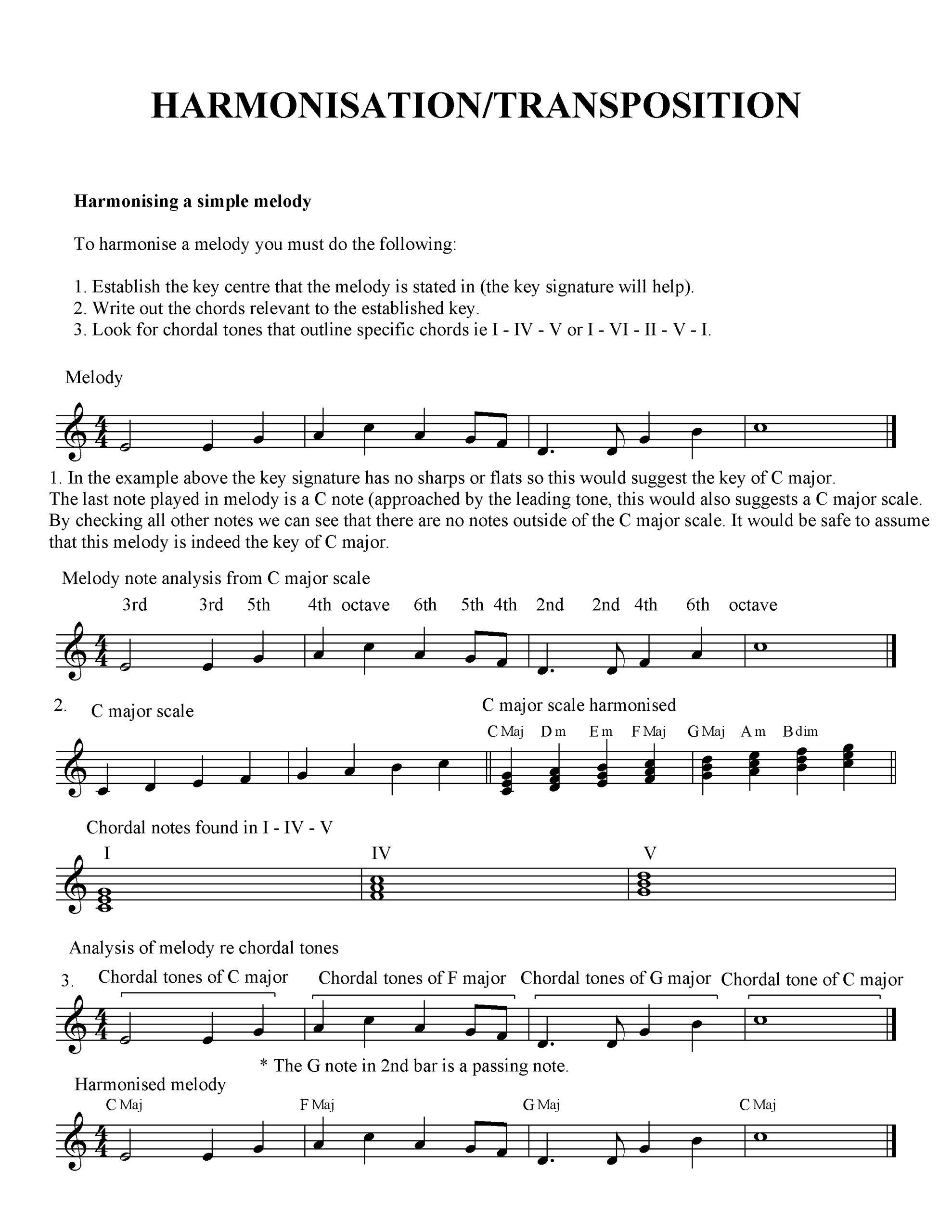
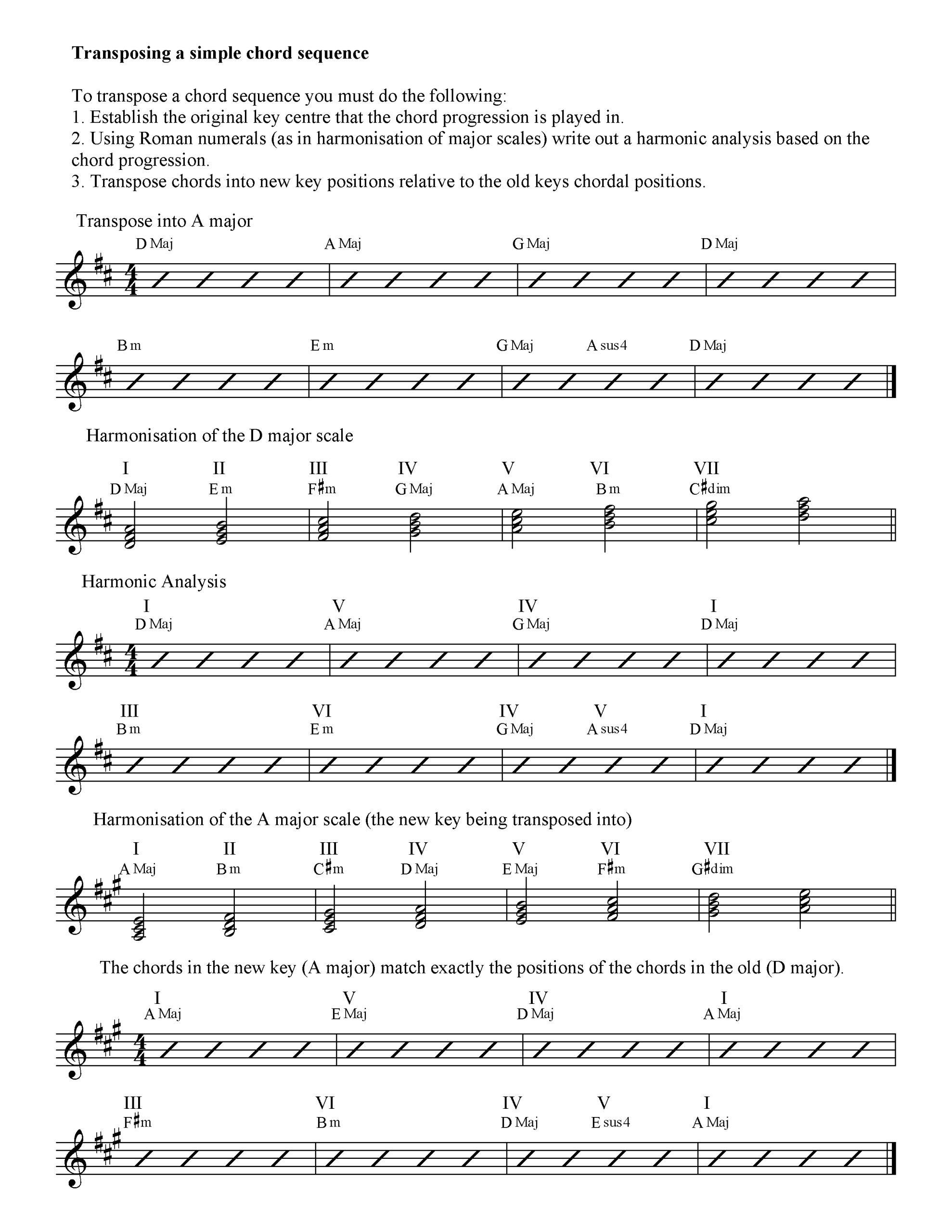
Tools for Transposing Guitar Music
Capo
The capo is a device that clamps down across the guitar’s fingerboard at a specified fret. Placing a capo on the fretboard effectively changes the key of the guitar, allowing you to play chord shapes and scales as if the guitar were naturally tuned to a different key. It’s a simple yet powerful tool for transposition.
Transposition Charts
Transposition charts provide a visual representation of how notes and chords shift from one key to another. They are particularly useful for quickly identifying the corresponding chords in the target key.
Music Software Applications
Several music software applications can automate the transposition process. These tools allow you to input a piece of music and instantly transpose it to a desired key, simplifying the task of arranging music for the guitar.
Step-by-Step Transposition Process
Identifying the Original Key
The first step in transposing music is to determine the original key of the piece. This involves examining the key signature and identifying the tonic note or home chord from which the piece is centered.
Choosing the Target Key
Next, decide on the target key to which you wish to transpose the music. The choice may be influenced by the need to match a singer’s vocal range, blend with other instruments, or simplify the piece’s execution on the guitar.
Applying the Transposition
Once the original and target keys are determined, you apply the transposition by shifting each note or chord by the same interval that separates the two keys. This requires a solid understanding of music theory and the guitar fretboard.
Transposing Chords
Understanding Chord Names and Symbols
Guitar chords are named according to their root note and the quality (major, minor, diminished, etc.) of the chord. Understanding these names and symbols is essential for recognizing and transposing chords accurately.
Transposing Chords Manually
Manually transposing chords involves identifying the root notes of the original chords and then finding the corresponding root notes in the target key. From there, you construct the new chords based on the target key’s harmony.
Using a Capo to Transpose Chords
Using a capo is a quick method for transposing chords. By placing the capo on the fretboard, you can play the original chord shapes, and the capo transposes the sounds to the target key. This method is particularly useful for accompanying singers in different keys.
Transposing Melodies and Solos
Identifying the Melody Notes
To transpose melodies or solos, you first need to identify the sequence of notes that make up the melody. This may require you to listen closely to the piece or to read the music notation.
Maintaining the Melodic Contour
When transposing melodies, it’s critical to maintain the original contour or shape of the melody, even as you shift the notes to a new key. This preserves the melody’s expressive qualities.
Adjusting for Playability on the Guitar
As you transpose melodies, consider the playability of the new key on the guitar. Some keys may result in easier fingerings and more resonant timbres, enhancing the overall performance.
Common Transposition Challenges
Maintaining Original Voicings
One challenge in transposing music is preserving the original voicings of chords, which may not transition neatly to the guitar’s fretboard in a new key. Finding voicings that stay true to the original’s texture requires creativity and flexibility.
Dealing with Complex Chords
Transposing complex chords that involve extensive finger stretching or uncommon intervals can be particularly tricky. Developing an extensive chord vocabulary can help navigate these challenges more effectively.
Adjusting to New Fingerings
Adjusting to new fingerings in a transposed key can be difficult, especially for complex passages. Regular practice and experimentation with different fingerings can ease this transition.

Practical Tips for Successful Transposition
Memorizing the Circle of Fifths
The Circle of Fifths is a visual tool that illustrates the relationship between keys and can guide you in transposing music efficiently. Memorizing it can significantly speed up the transposition process.
Practice Transposing Simple Songs
Begin with simple songs to practice transposition. This helps to reinforce your understanding of key changes and builds confidence before tackling more complex pieces.
Developing a Good Ear for Key Changes
A well-trained ear can quickly recognize key changes and facilitate smoother transpositions. Incorporate ear training exercises into your practice routine to refine this skill.
Conclusion: Enhancing Musicality Through Transposition
The Benefits of Mastering Transposition
Mastering transposition significantly broadens your musical repertoire and flexibility. It allows you to adapt music for different settings and ensures that you can always play in the most comfortable key for yourself and others.
Encouragement to Practice Regularly
Consistent practice is key to becoming proficient at transposing music. As you familiarize yourself more with the guitar fretboard and music theory, transposition will become an intuitive part of your musicianship.
How Transposition Broadens Your Guitar Skills and Repertoire
Transposition is not just a technical skill; it’s a gateway to a more profound musical understanding. It empowers you to explore a wider range of music, collaborate more effectively with other musicians, and express yourself more freely on the guitar.

This post may contain affiliate links. As an Amazon associate, Google associate as well as associate for other programs, Guitar & Music Institute may earn commissions from qualifying purchases.







